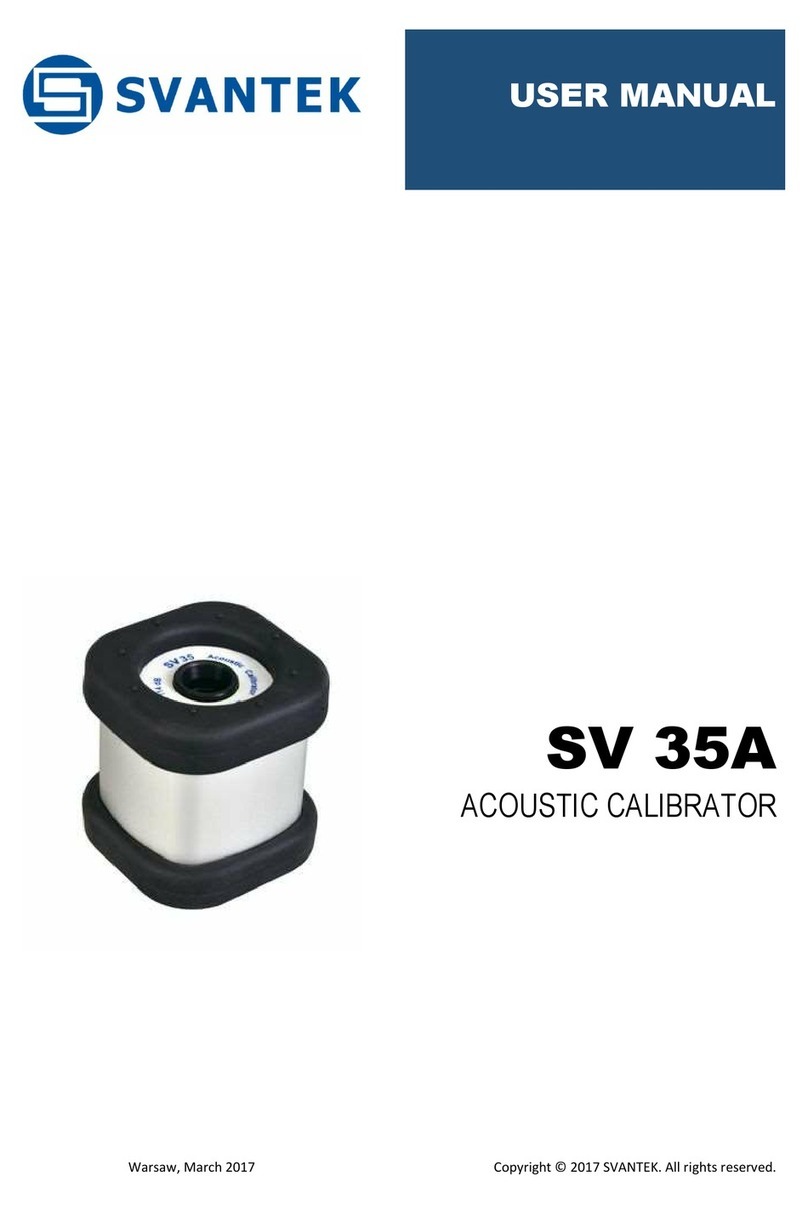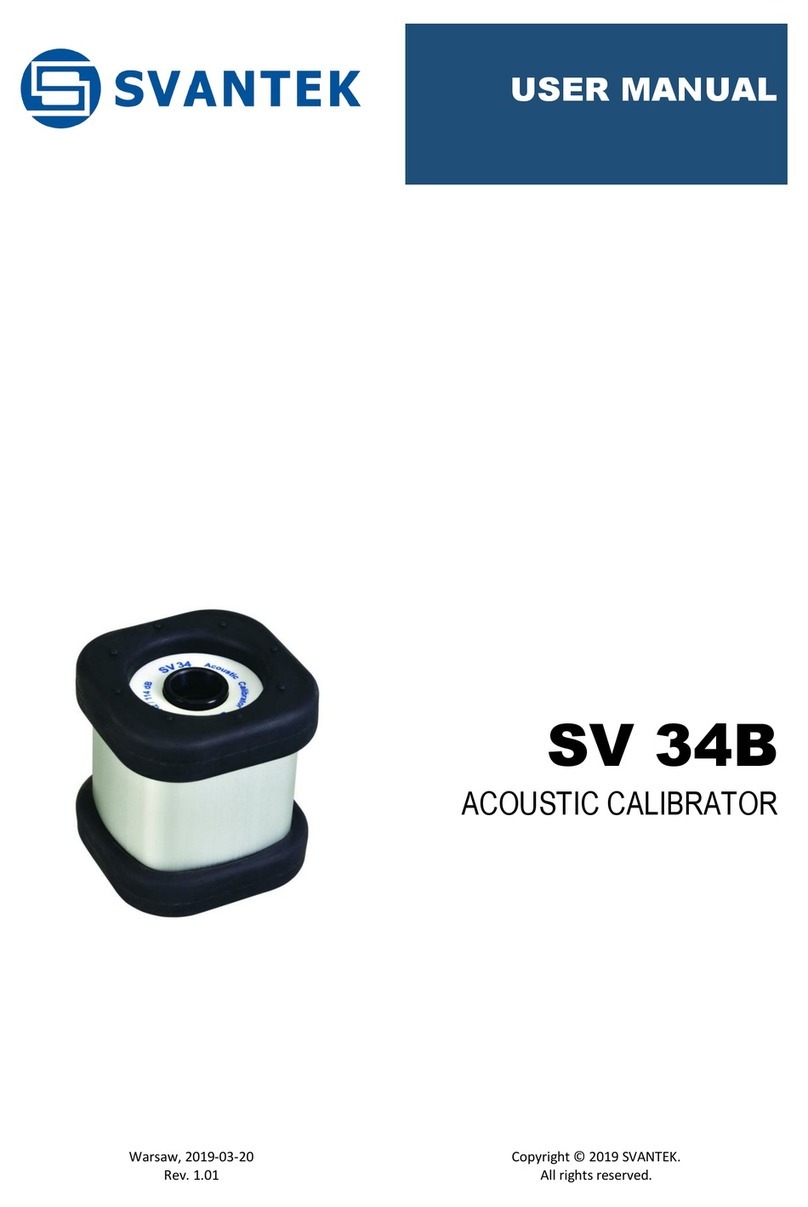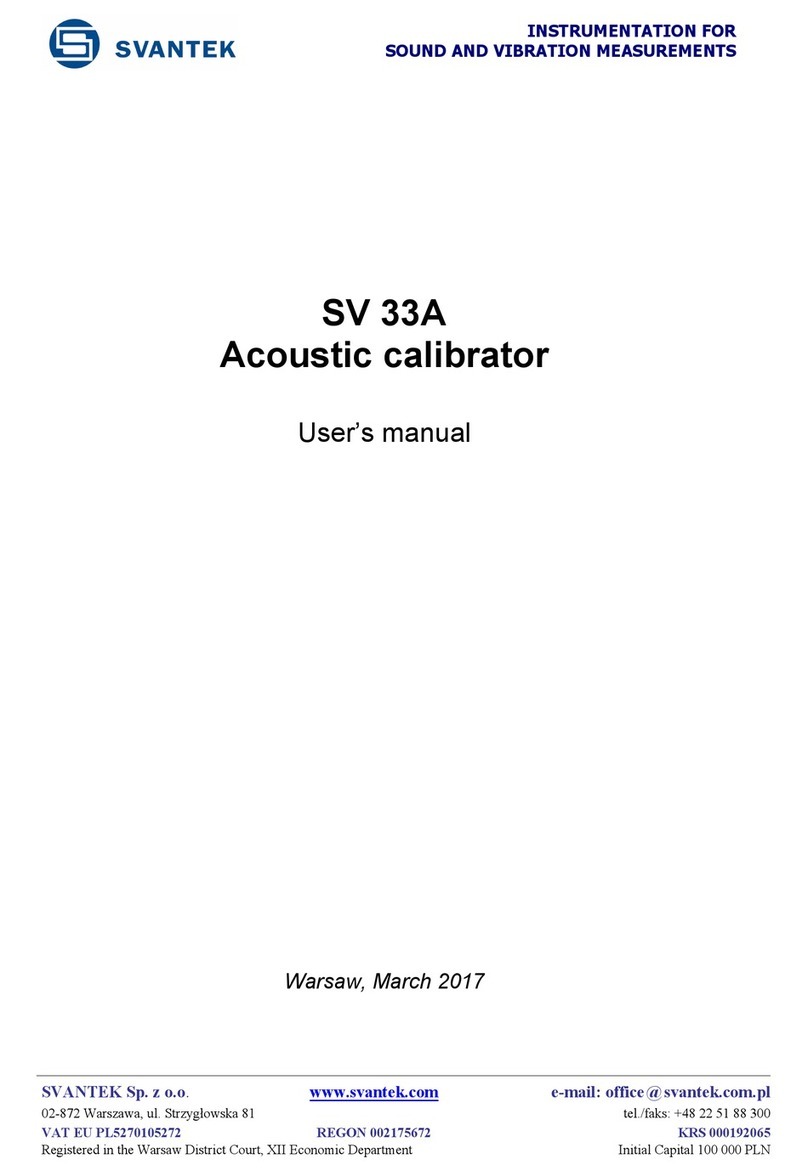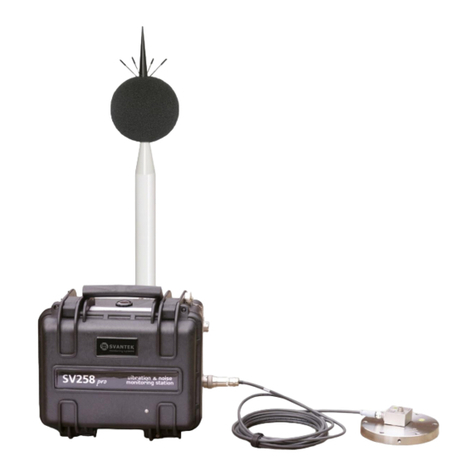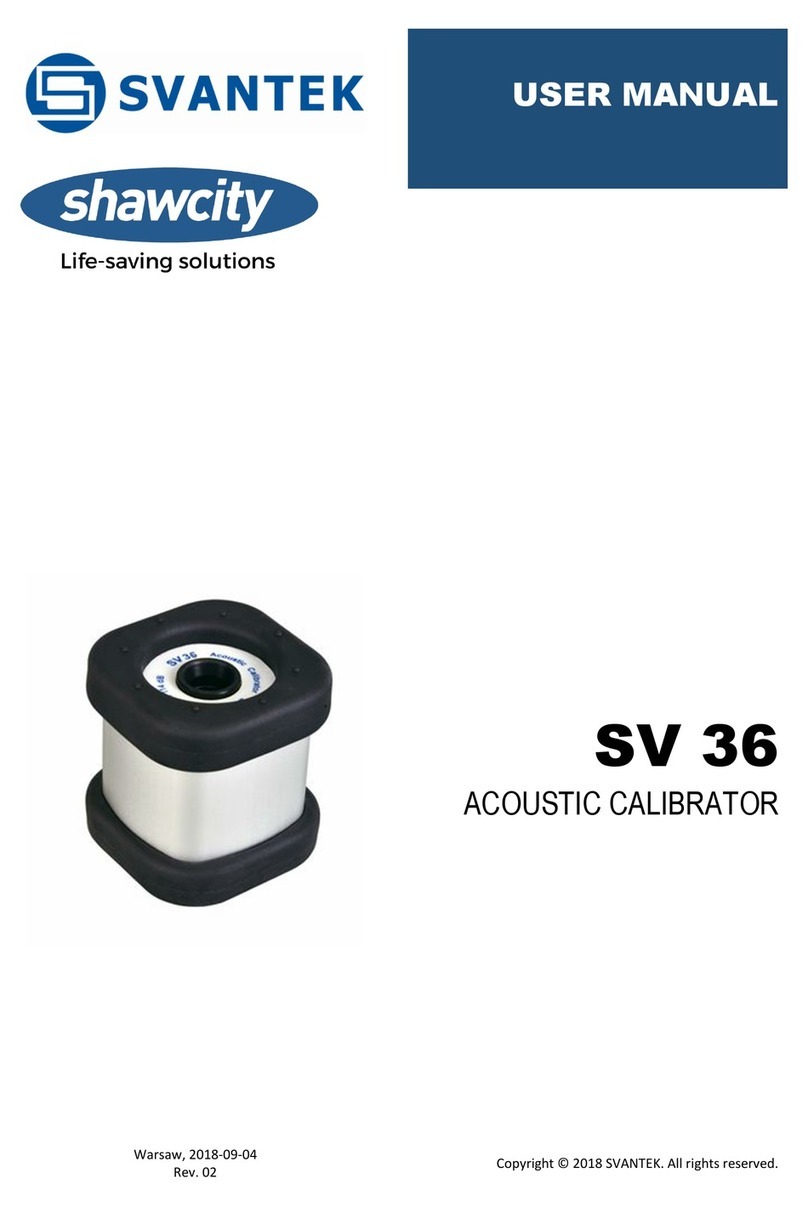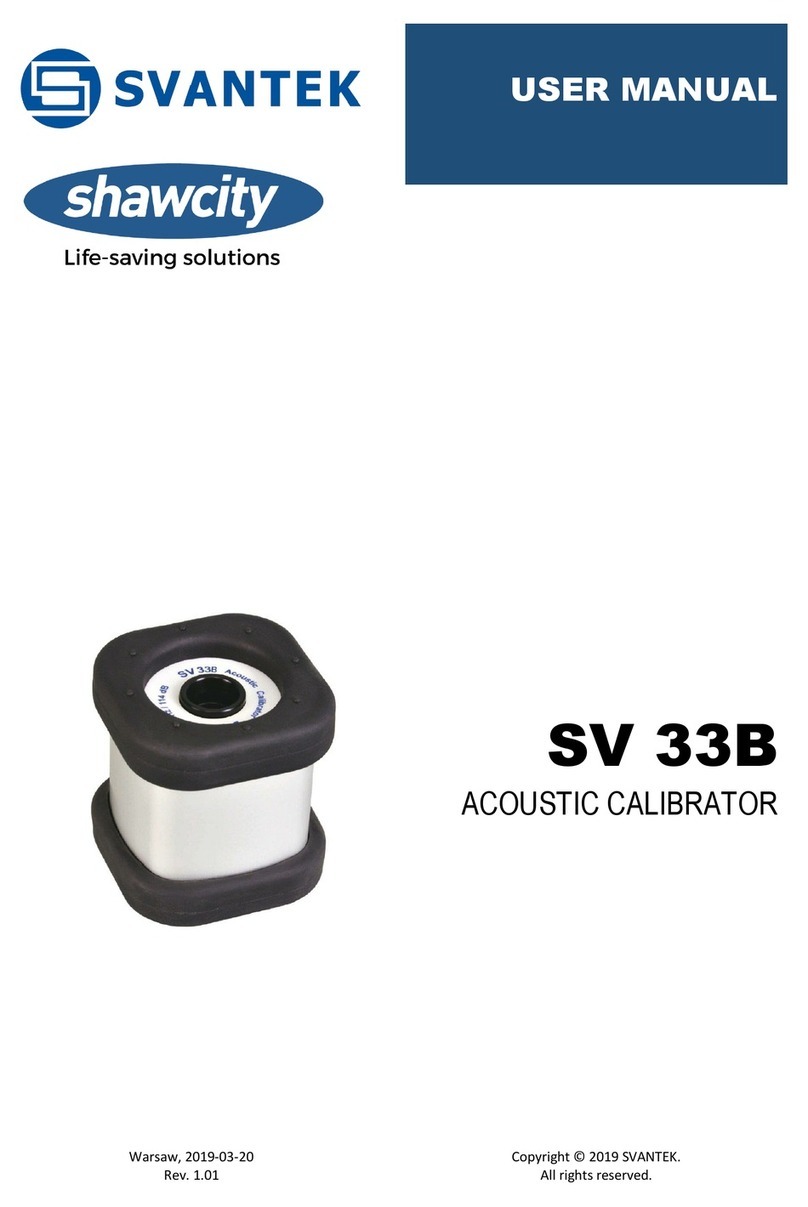
SV110 user's manual
(during this time the manufacturer's logo, the name of the instrument and firmware
version is displayed).
In the ready to operate mode the SV 110 displays the
amplitude and frequency of the shaker:
TURNING OFF: To shut down the unit the operator should hold the <Start/Stop> key
for a couple of seconds during which a countdown (“Shutting down” 3… 2… 1… ) is
displayed. Thus, the SV 110 gives you time to decide if you really want to turn off the
instrument. If you release the key too early, the SV 110 returns to the last presented
VIEW mode.
Notice: If the battery capacity is low SV 110 will show a
warning screen and signal it with red or yellow diode lights.
“Low Battery!” or “Warning! Low Battery!” messages appear
when the shaker is stopped or is working accordingly.
7.2. Menu content
The menu is simply operated by three push-buttons and small OLED display. The
Menu list consists of six positions: Sensor Type, Units, Frequency Units, Calibration,
Battery, USB charging and Unit Label.
To enter the Menu mode the user should press <Level>
and <Freq.> keys simultaneously. The <Level> and <Freq.>
keys enable the user To scroll the Menu list down and up.
To open the sub-menu the user should press
<Start/Stop> key at the selected position.
Sensor type selection
The Sensor Type position enables the user to select the
type of used sensor: Accelerometer or Velocity and
Displacement transducer.
For each sensor type and frequency there is dedicated set
of charger amplitudes (see chapter “Technical data”):
<Start/Stop>
<Level>
For 79.58Hz:
- 1; 2; 3; 4; 5; 6; 7; 8; 9; 10 m/s2;
- 2, 4, 6, 8 10, 12, 14, 16, 18 20 mm/s;
- 4, 8, 12, 16, 20, 24, 28, 32, 36, 40 µm.












